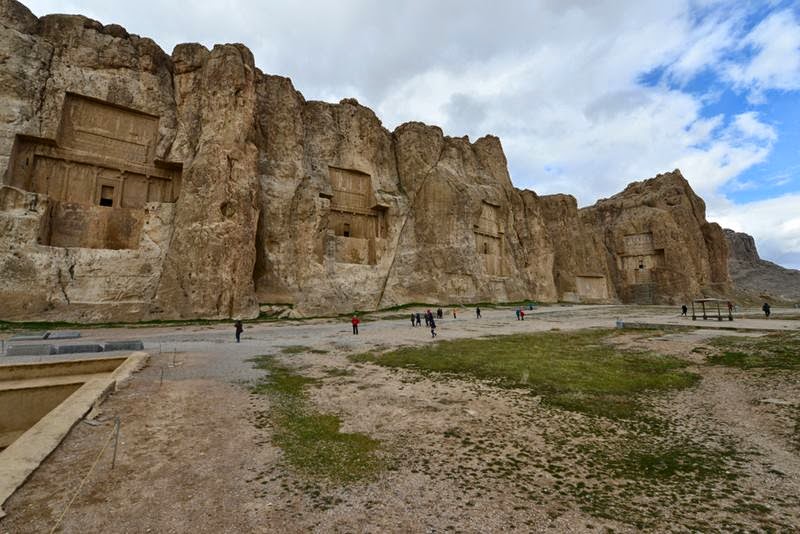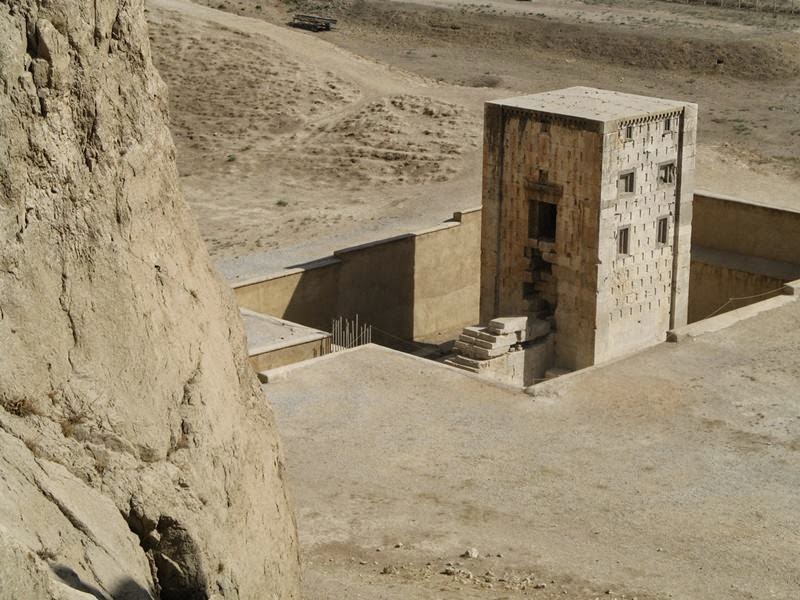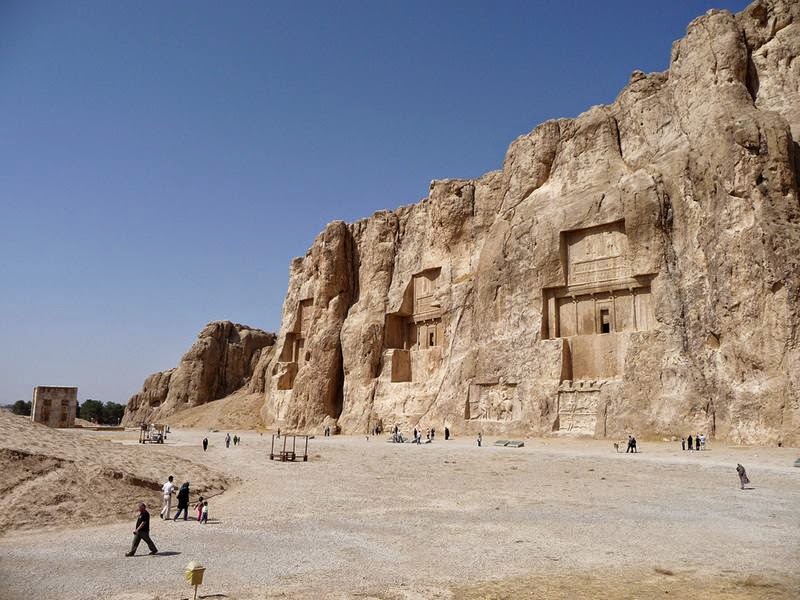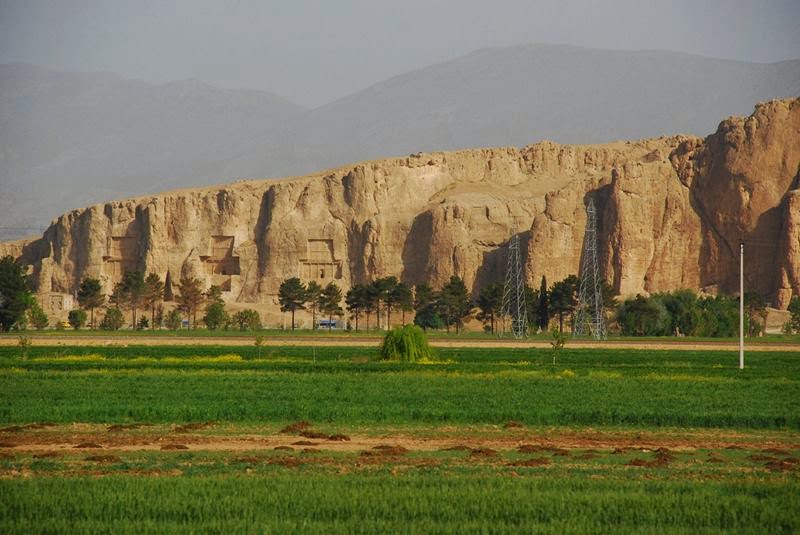The Royal Rock Tombs at Naqsh-e Rostam, Iran
Naqsh-e Rostam or The Throne of Rustam is an ancient burial site for Persian Kings located 12 km northwest of Persepolis in Fars Province, Iran. There are four tombs carved in the cliffs in cross shapes, all lying about 10-20 meters above the ground. The tombs are said to be those of Darius II, Artaxerxes I, Darius I and Xerxes I. At the Naqsh-e Rostam site there are also some bas-reliefs carved in the rock representing war scenes and royal events. The Kaba-ye Zartosht tower is a cubical structure thought to be either a royal tomb, a calendar or a treasury.

Hillside Tombs, Naqsh-E Rostam. Image credit Julia Maudlin
The oldest relief at Naqsh-e Rustam dates to c. 1000 BC. Though it is severely damaged, it depicts a faint image of a man with unusual head-gear and is thought to be Elamite in origin. The depiction is part of a larger mural, most of which was removed at the command of Bahram II. The man with the unusual cap gives the site its name, Naqsh-e Rostam, "Rostam Inscription", because the relief was locally believed to be a depiction of the mythical hero Rostam.
The tombs are known locally as the 'Persian crosses', after the shape of the facades of the tombs. The entrance to each tomb is at the center of each cross, which opens onto to a small chamber, where the king lay in a sarcophagus. The horizontal beam of each of the tomb's facades is believed to be a replica of the entrance of the palace at Persepolis.
One of the tombs is explicitly identified by an accompanying inscription as the tomb of Darius I the Great (c. 522-486 BC). The other three tombs are believed to be those of Xerxes I (c. 486-465 BC), Artaxerxes I (c. 465-424 BC), and Darius II (c. 423-404 BC) respectively. A fifth unfinished one might be that of Artaxerxes III, who reigned at the longest two years, but is more likely that of Darius III (c. 336-330 BC), last of the Achaemenid dynasts. The tombs were looted following the conquest of the Achaemenid Empire by Alexander the Great. [source]

Naqsh-e Rustam - Kab'eh-ye Zardusht. Image credit David Stanley
Kab'eh-ye Zardusht, or the "Cube of Zoroaster", is a mysterious structure below the rock-cut tombs in the cliff face. Although steps lead up to a hollow chamber, the "windows" are solid rock. It is known as the cube of Zoroaster because it may have been a Zoroastrian fire temple. It may also have been a tomb: but if it was a tomb why isn't it like the others at the site.
In 1923, the German archaeologist Ernst Herzfeld made casts of the inscriptions on the tomb of Darius I. Since 1946, these casts have been held in the archives of the Freer Gallery of Art and the Arthur M. Sackler Gallery, Smithsonian Institution, in Washington, DC. Naqsh-e Rustam was excavated for several seasons between 1936 and 1939 by a team from the Oriental Institute of the University of Chicago, led by Erich Schmidt.

Image credit H Sinica

The Triumph of Shapur II, Naqsh-e Rostam. Image credit Dan

The Investiture of Ardashir I, Naqsh-e Rostam. Image credit Dan

Naqsh-e Rustam - Kab'eh-ye Zardusht Image credit Paul

Image credit Dan

Naqsh-e Rostam, Rock Tombs. Image credit Daniel

Image credit Fulvio Spada

Image credit Lucsaflex

The Royal Rock Tombs at Naqsh-e Rostam. Image credit David Lewis
Source —Internet

No comments:
Post a Comment